Air Flow Detection in Crude Oil by Infrared Light
Abstract
:1. Introduction
2. Materials and Methods
3. Results and Discussion
3.1. Temperature Monitoring
3.2. Bubble Diameter Effect on Optical Detection
3.3. Air Bubbles Flow through Static Crude Oil
3.4. Crude Oil and Air Flow
4. Conclusions
Acknowledgments
Author Contributions
Conflicts of Interest
References
- Estrella, G. Pre-salt production development in Brazil. In Proceedings of the 20th World Petroleum Congress, Doha, Qatar, 4–8 December 2011; pp. 96–99. [Google Scholar]
- Speight, J.G. The Chemistry and Technology of Petroleum, 4th ed.; CRC Press: New York, NY, USA, 2006. [Google Scholar]
- Speight, J.G. Handbook of Petroleum Analysis; Wiley-Interscience: New York, NY, USA, 2001. [Google Scholar]
- Carey, S.J.; Mccann, H.; Hindle, F.P.; Ozanyan, K.B.; Winterbone, D.E.; Clough, E. Chemical species tomography by near infra-red absorption. Chem. Eng. J. 2000, 77, 111–118. [Google Scholar] [CrossRef]
- McCann, H.; Wright, P.; Daun, K. Industrial Tomography: Systems and Applications, 1st ed.; Wang, M., Ed.; Woodhead Publishing: Cambridge, UK, 2015. [Google Scholar]
- Ahmed, W.H. Capacitance Sensors for Void-Fraction Measurements and Flow-Pattern Identification in Air-Oil Two-Phase Flow. IEEE Sens. J. 2006, 6, 1153–1163. [Google Scholar] [CrossRef]
- Libert, N.; Morales, R.E.M.; da Silva, M.J. Capacitive measuring system for two-phase flow monitoring. Part 1: Hardware design and evaluation. Flow Meas. Instrum. 2016, 47, 90–99. [Google Scholar] [CrossRef]
- Heindel, T.J.; Gray, J.N.; Jensen, T.C. An X-ray system for visualizing fluid flows. Flow Meas. Instrum. 2008, 19, 67–78. [Google Scholar] [CrossRef]
- Hervieu, E.; Jouet, E.; Desbat, L. Development and Validation of an X-ray Tomograph for Two-Phase Flow. Ann. N. Y. Acad. Sci. 2002, 972, 87–94. [Google Scholar] [CrossRef] [PubMed]
- Murai, Y.; Tasaka, Y.; Nambu, Y.; Takeda, Y.; Gonzalez, S.R.A. Ultrasonic detection of moving interfaces in gas-liquid two-phase flow. Flow Meas. Instrum. 2010, 21, 356–366. [Google Scholar] [CrossRef]
- Hoyle, B.S. Process tomography using ultrasonic sensors. Meas. Sci. Technol. 1996, 7, 272. [Google Scholar] [CrossRef]
- Da Silva, M.J.; Schleicher, E.; Hampel, U. Capacitance wire-mesh sensor for fast measurement of phase fraction distributions. Meas. Sci. Technol. 2007, 18, 2245–2251. [Google Scholar] [CrossRef]
- Da Silva, M.J.; Thiele, S.; Abdulkareem, L.; Azzopardi, B.J.; Hampel, U. High-resolution gas–oil two-phase flow visualization with a capacitance wire-mesh sensor. Flow Meas. Instrum. 2010, 21, 191–197. [Google Scholar] [CrossRef]
- Baroncini, V.H.V.; Martelli, C.; José, M.; Morales, R.E.M. Single- and Two-Phase Flow Characterization Using Optical Fiber Bragg Gratings. Sensors 2015, 15, 6549–6559. [Google Scholar] [CrossRef] [PubMed]
- Zamarreno, C.R.; Martelli, C.; Baroncini, V.H.V.; dos Santos, E.N.; da Silva, M.J.; Morales, R.E.M.; Zubiate, P.; Arregui, F.J.; Matias, I.R. Single and Multiphase Flow Characterization by Means of an Optical Fiber Bragg Grating Grid. J. Light. Technol. 2015, 33, 1857–1862. [Google Scholar] [CrossRef]
- Schleicher, E.; da Silva, M.J.; Thiele, S.; Li, A.; Wollrab, E.; Hampel, U. Design of an optical tomograph for the investigation of single- and two-phase pipe flows. Meas. Sci. Technol. 2008, 19, 94006. [Google Scholar] [CrossRef]
- Vendruscolo, T.P.; Fischer, R.; Martelli, C.; Rodrigues, R.L.P.; Morales, R.E.M.; da Silva, M.J. Multiphase flow parameter estimation based on laser scattering. Meas. Sci. Technol. 2015, 26, 75205. [Google Scholar] [CrossRef]
- Dutra, G.; Martelli, C.; Patyk, R.L.; da Silva, M.J.; Vendruscolo, T.P.; Morales, R.E.M. Optical imaging of air and water bubbles flowing through oil. Proc. SPIE 2015, 9655, 96550T. [Google Scholar]
- Hecht, E. Optics, 4th ed.; Addison-Wesley: San Francisco, CA, USA, 2001. [Google Scholar]
- Swinehart, D.F. The Beer-Lambert Law. J. Chem. Educ. 1962, 39, 333. [Google Scholar] [CrossRef]
- Lvovsky, A.I. Fresnel Equations. In Encyclopedia of Optical and Photonic Engineering; CRC Press: Calgary, Canada, 2015; pp. 1–6. [Google Scholar]
- El Ghandoor, H.; Hegazi, E.; Nasser, I.; Behery, G. Measuring the refractive index of crude oil using a capillary tube interferometer. Opt. Laser Technol. 2003, 35, 361–367. [Google Scholar] [CrossRef]
- Vendruscolo, T.P.; Patyk, R.L.; Dutra, G.; Martelli, C.; Morales, R.E.M. Mid-Infrared Optical Tomography for Imaging through Petroleum: A Feasibility Study. In Proceedings of the 2015 IEEE International Instrumentation and Measurement Technology Conference (I2MTC), Pisa, Italy, 11–14 May 2015; pp. 5–8. [Google Scholar]
- Do Amaral, C.E.F.; Alves, R.F.; Da Silva, M.J.; Arruda, L.V.R.; Dorini, L.; Morales, R.E.M.; Pipa, D.R. Image processing techniques for high-speed videometry in horizontal two-phase slug flows. Flow Meas. Instrum. 2013, 33, 257–264. [Google Scholar] [CrossRef]

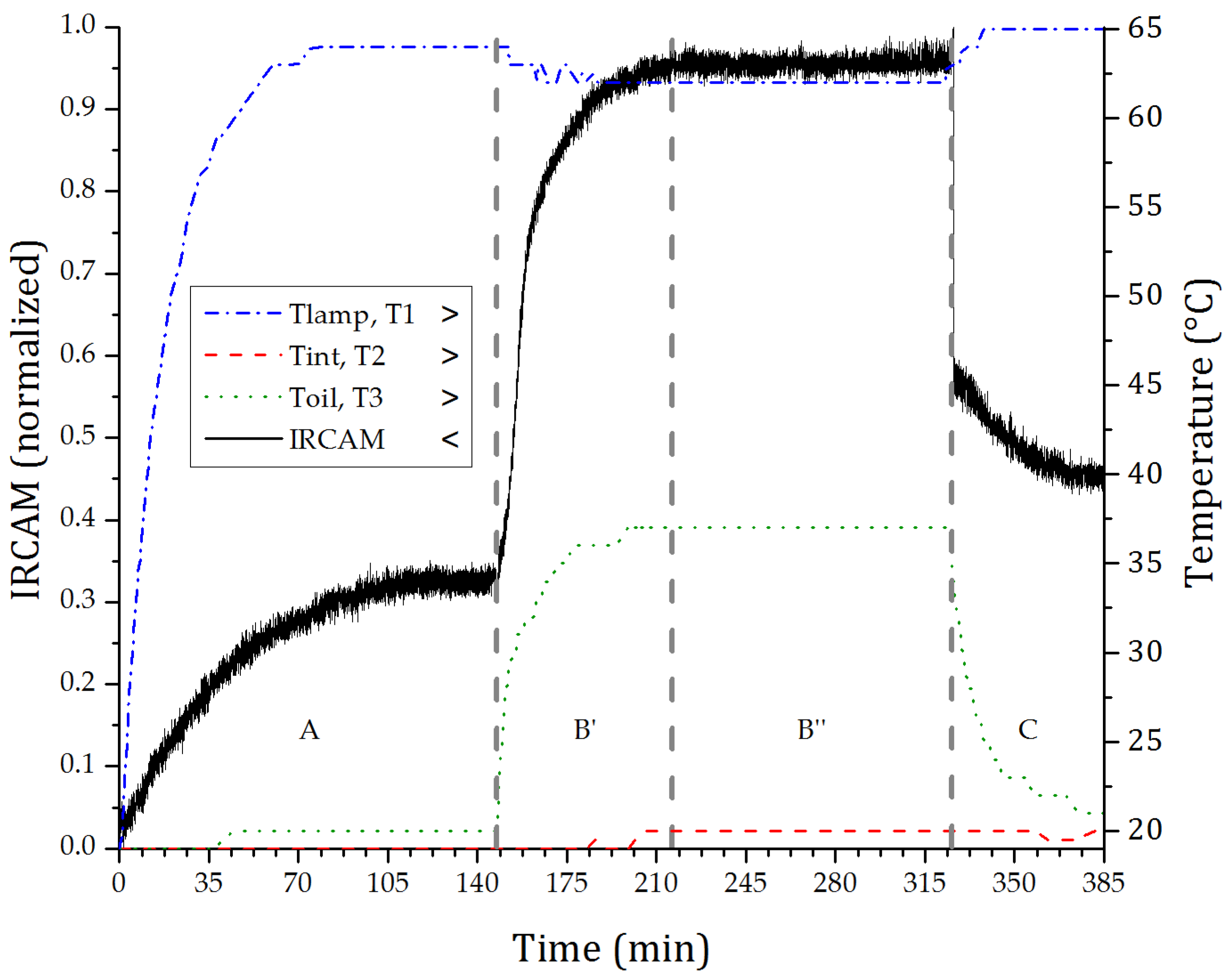
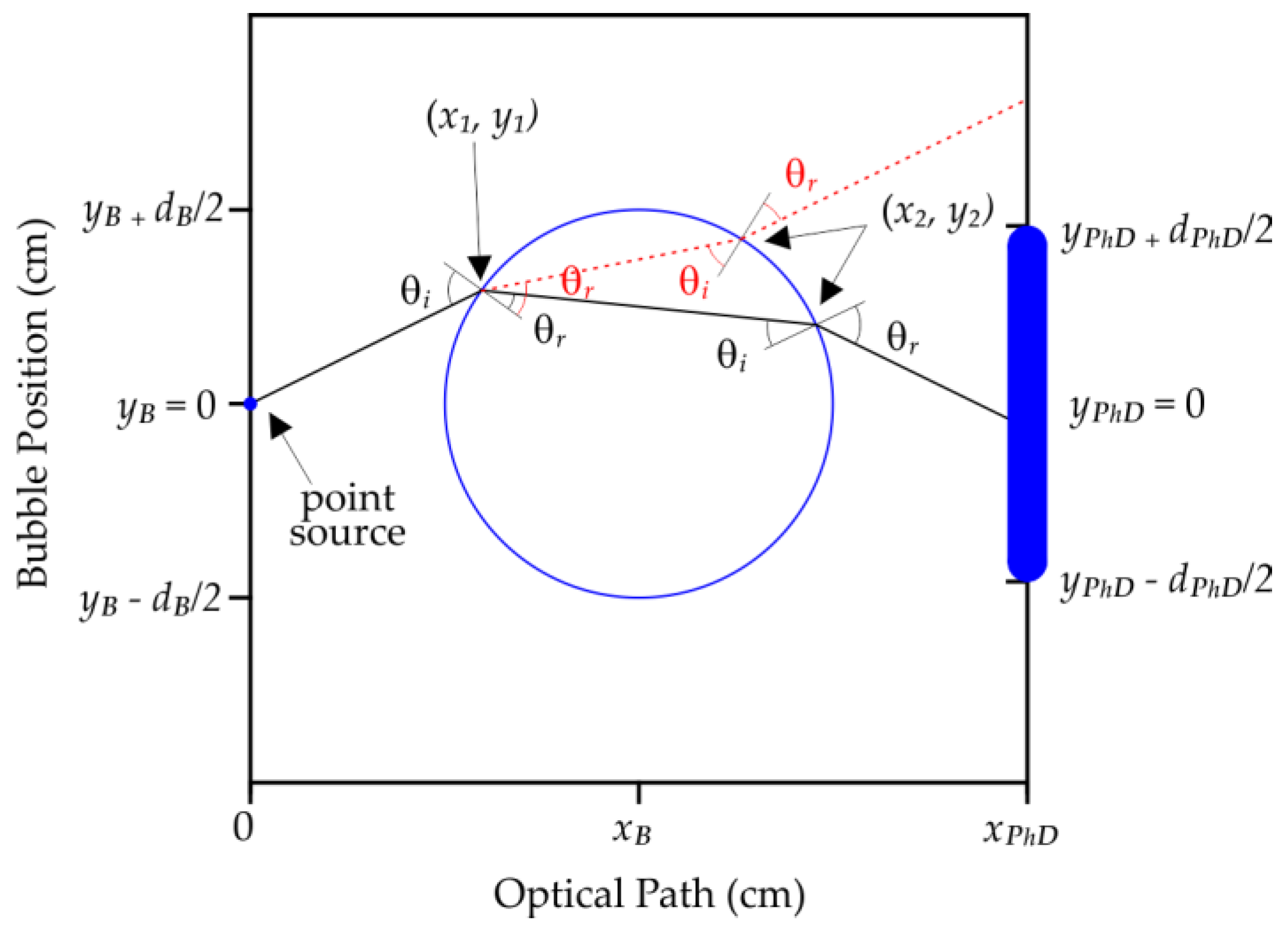
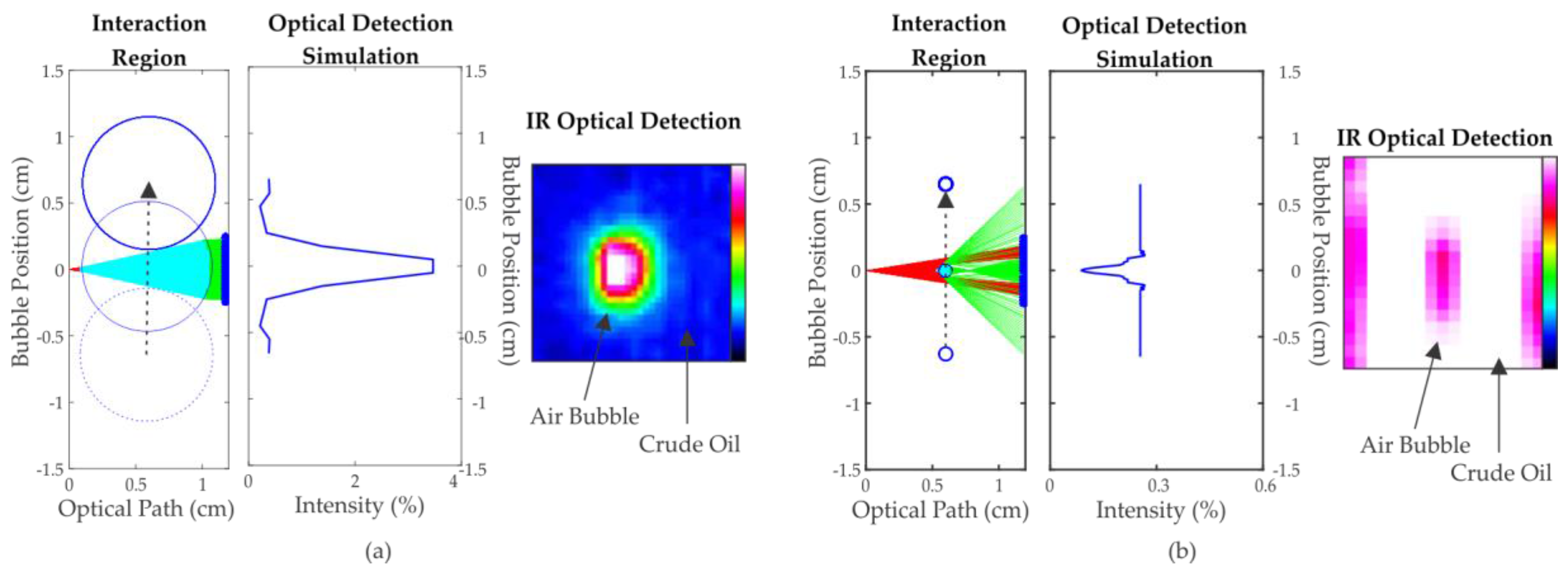
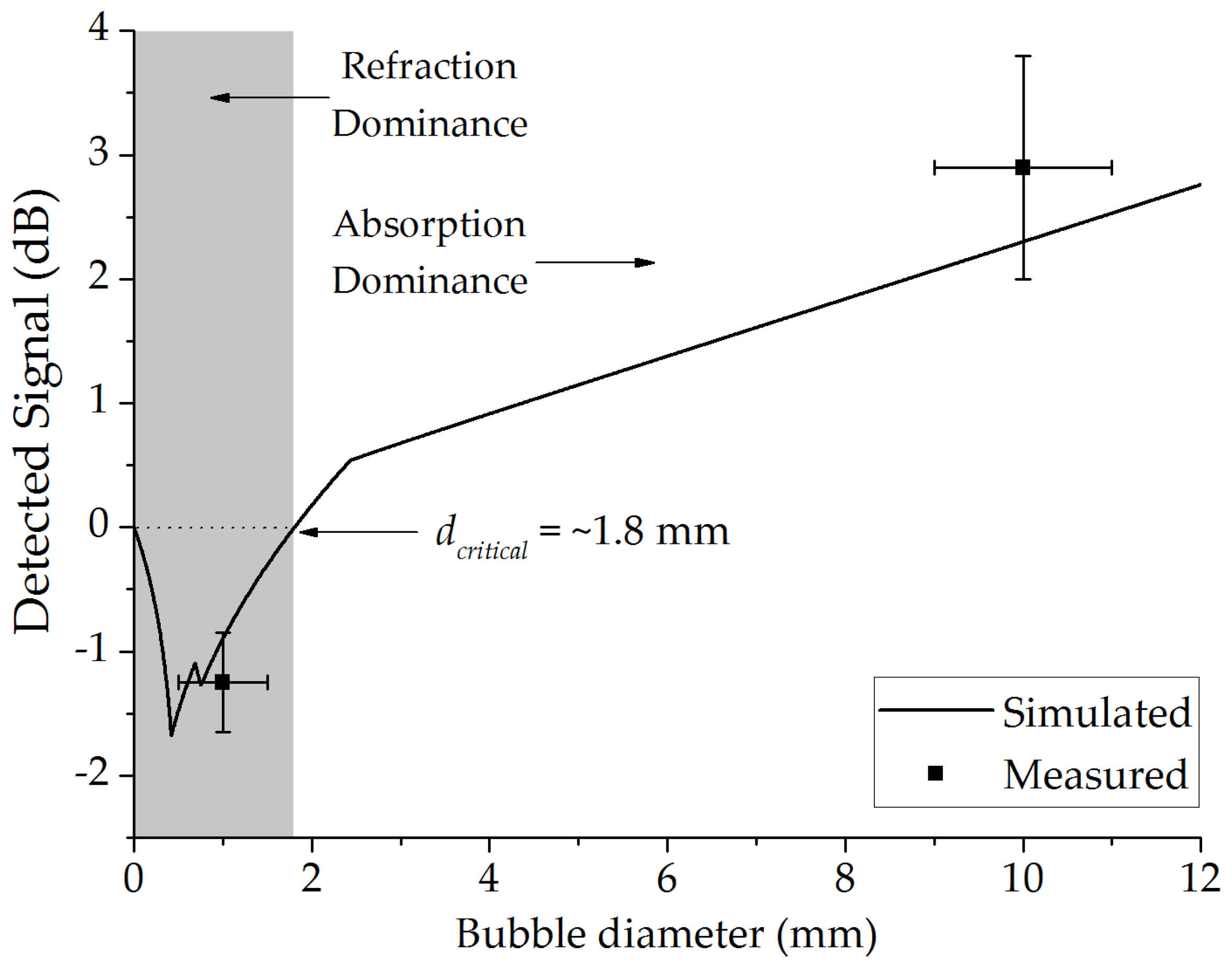
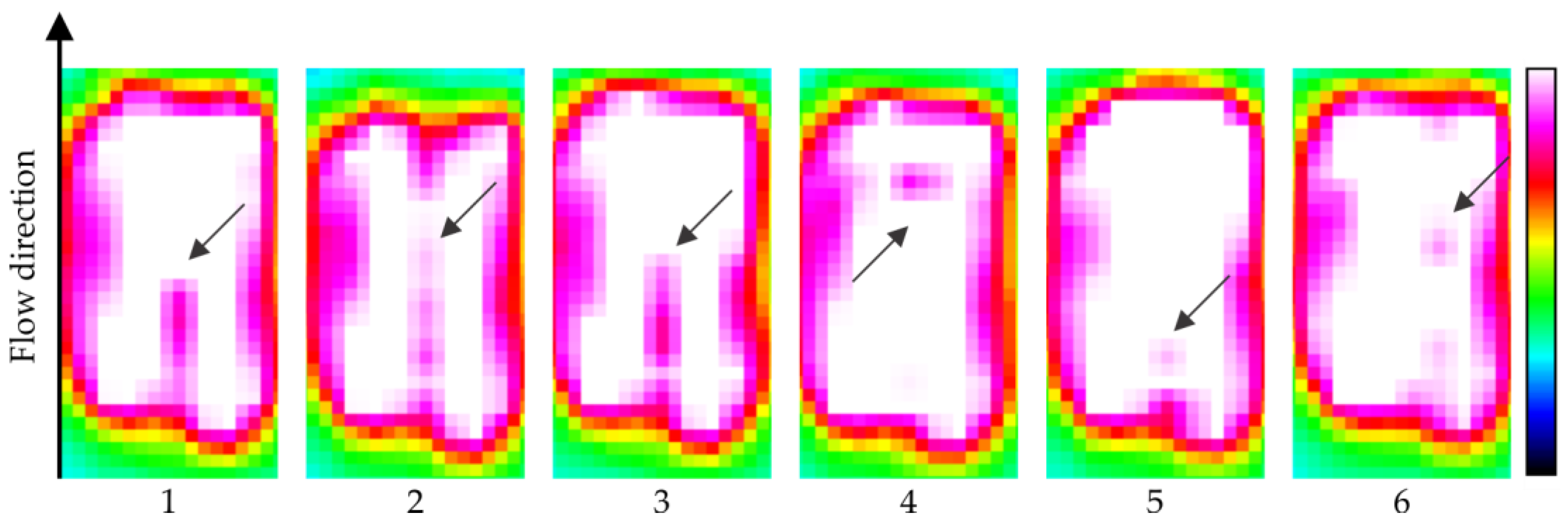
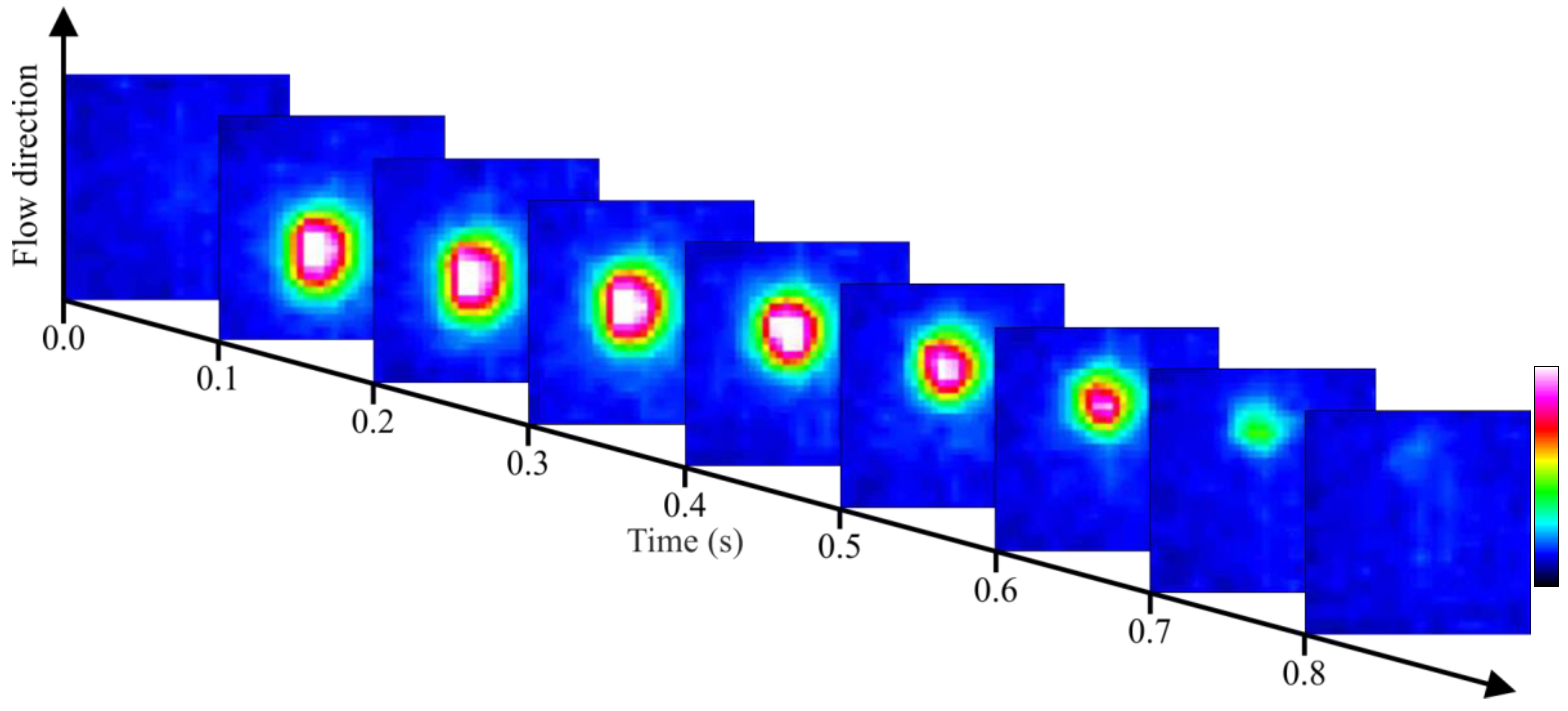
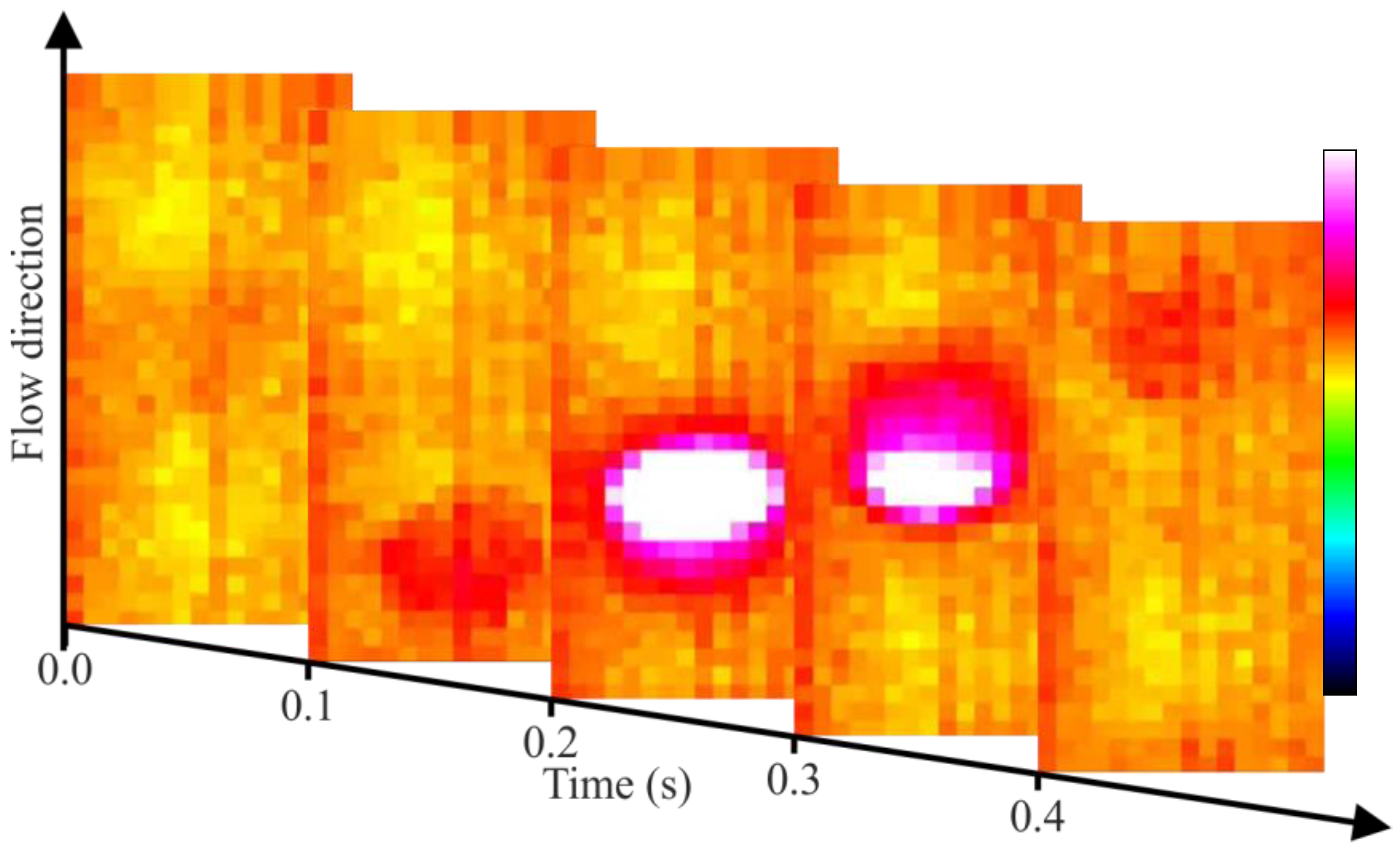
| Region 1 | Region 2 | Region 3 | Region 4 | Region 5 | |
|---|---|---|---|---|---|
| Wavelength | 0.5 μm | 3.4 μm | 4–6 μm | 7 μm | 8–12 μm |
| Transmittance | <0.1 | <0.4 | >0.9 | 0.7 | >0.9 |
© 2017 by the authors. Licensee MDPI, Basel, Switzerland. This article is an open access article distributed under the terms and conditions of the Creative Commons Attribution (CC BY) license (http://creativecommons.org/licenses/by/4.0/).
Share and Cite
Dutra, G.; Martelli, C.; Da Silva, M.J.; Patyk, R.L.; Morales, R.E.M. Air Flow Detection in Crude Oil by Infrared Light. Sensors 2017, 17, 1278. https://doi.org/10.3390/s17061278
Dutra G, Martelli C, Da Silva MJ, Patyk RL, Morales REM. Air Flow Detection in Crude Oil by Infrared Light. Sensors. 2017; 17(6):1278. https://doi.org/10.3390/s17061278
Chicago/Turabian StyleDutra, Guilherme, Cicero Martelli, Marco José Da Silva, Rodolfo L. Patyk, and Rigoberto E. M. Morales. 2017. "Air Flow Detection in Crude Oil by Infrared Light" Sensors 17, no. 6: 1278. https://doi.org/10.3390/s17061278
APA StyleDutra, G., Martelli, C., Da Silva, M. J., Patyk, R. L., & Morales, R. E. M. (2017). Air Flow Detection in Crude Oil by Infrared Light. Sensors, 17(6), 1278. https://doi.org/10.3390/s17061278







